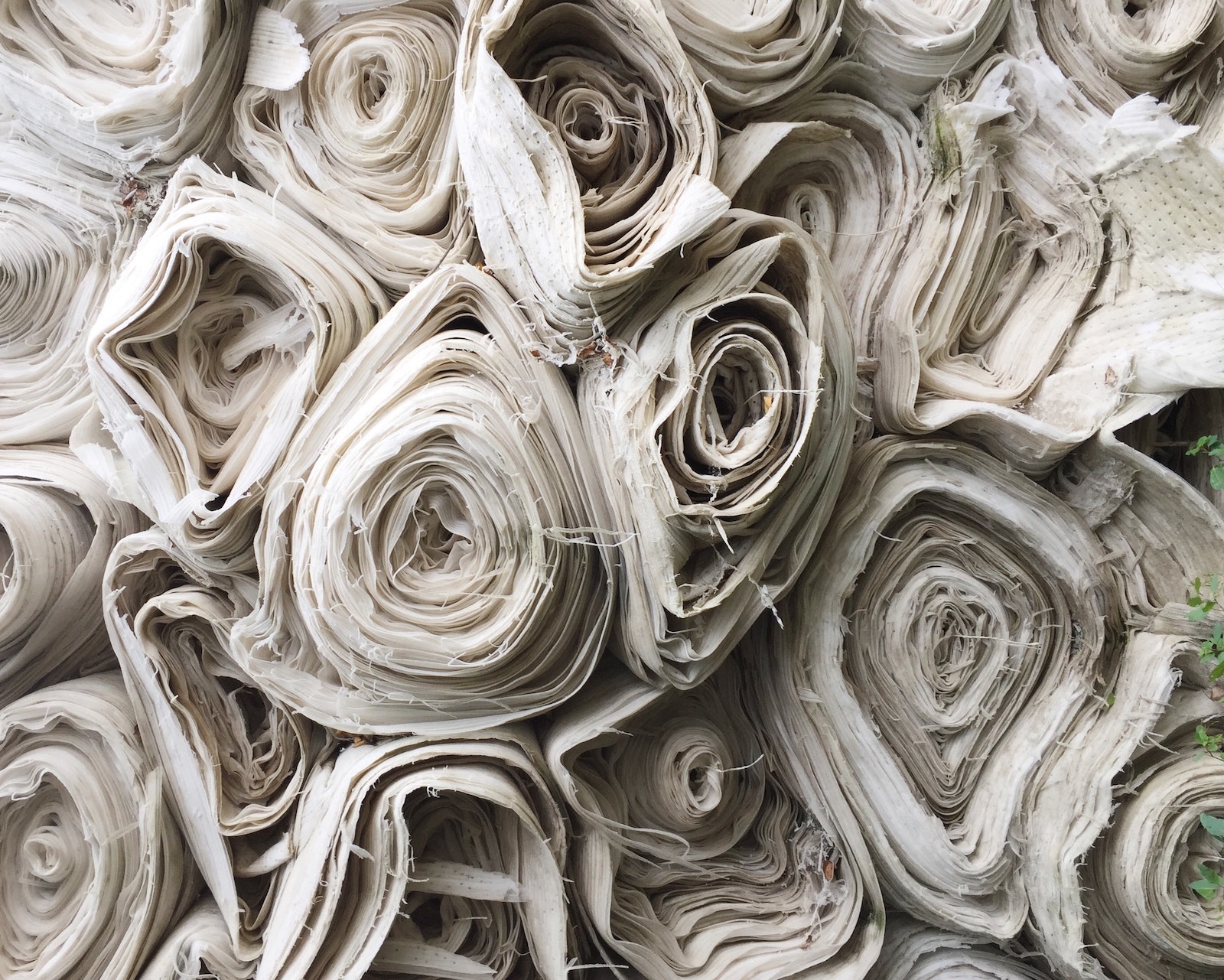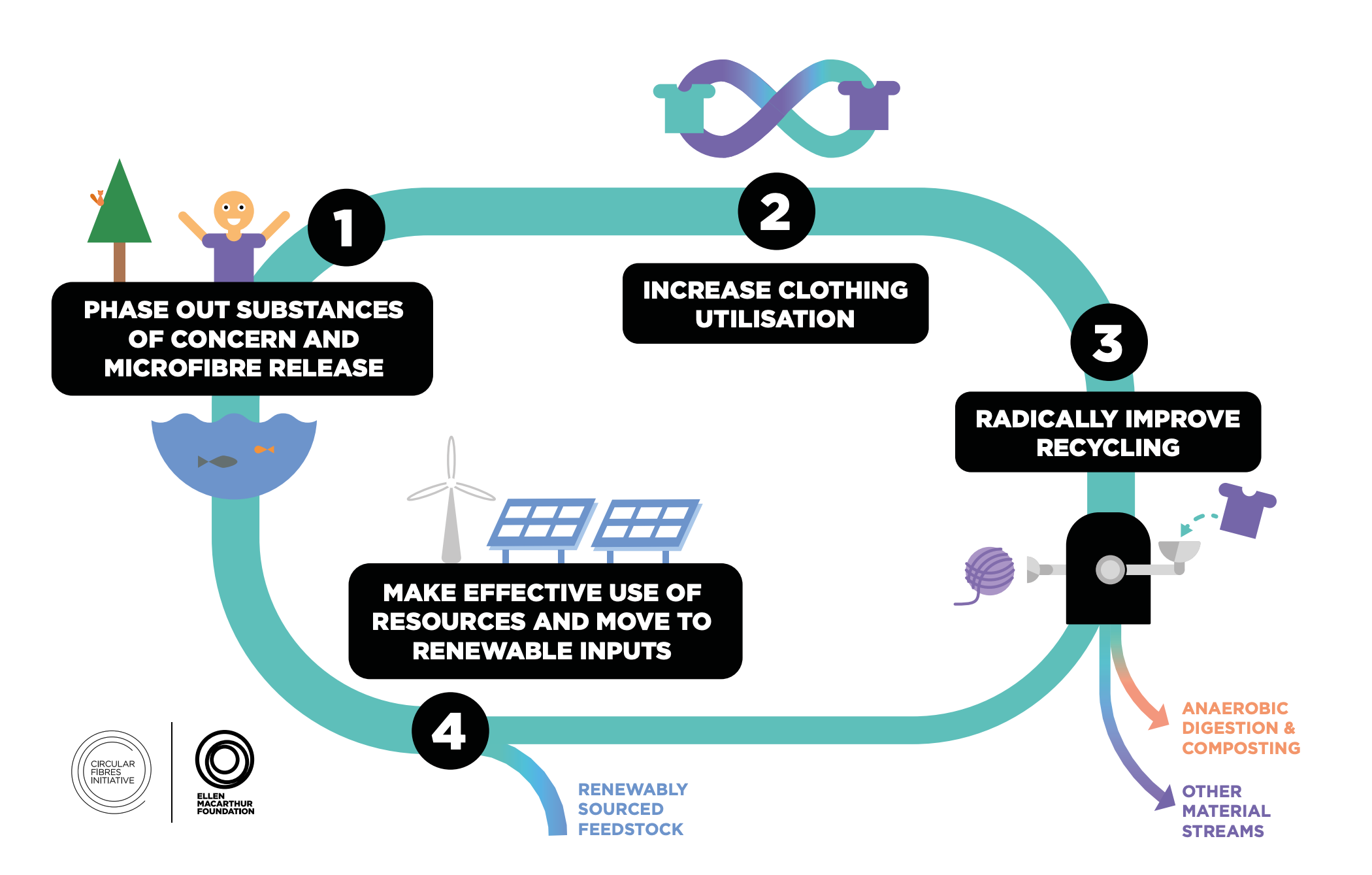Photo: Sarah Brown, Unsplash
With the accessibility of online shopping, the rise in Instagram brands, and the ever-changing trends of fast fashion, our clothes have shorter lifespans than ever before. For years, the fashion industry has encouraged consumers to hop from look to look in a way that generates profits, but also causes significant issues for our planet.
Despite the waste and challenges inherent in the fashion industry, fashion brands and changemakers are finding ways to make materials and clothing production more sustainable and creating opportunities to give back. Here, we’ve put together an overview of the environmental cost of making our clothes, and introduce you to sustainable fashion brands that are using less water, less fuel and more organic materials to make staple pieces we’re proud to wear on our sleeves.
The Price We Pay for Fast Fashion
In the United States, over 11% of the waste in our landfills, or 8.9 million tonnes, are from rubber, leather and textiles, ranking a close fourth to paper (13%), plastics (19%) and food (22%). Not only do those tossed out tees and tennis shoes take up significant amounts of space, but many take decades to break down while others don’t degrade at all.
Today’s linear system to make clothes and textiles uses an extensive amount of resources and has a negative impact on our environment and people. Fabric production takes a significant number of chemicals, from pesticides in cotton fields to coloring dyes to plastic microfibers in synthetic fabrics.
When those textiles hit our landfills, the chemicals end up producing more greenhouse gas emissions than those of all international flights and maritime shipping combined, in addition to accounting for 20% of industrial wastewater pollution worldwide. The supply chain’s many touch points (for example, making the textiles in India to factory production in China and distribution in the United States) rely heavily on excess fuel and energy and increases fashion’s carbon footprint just to get items in consumers’ hands.
And with the high demand and fast turnaround time expected from some large fashion brands, labor can play a significant ethical factor. Workers in some countries suffer from unsafe work environments ranging from chemical exposure to dangerous equipment, while others may work long hours for low wages.
The result is an industry mired in environmental and moral dilemmas. But fashion doesn’t need to be this way. If the fashion industry can change how they source, produce and distribute clothes, the world economy could save $192 billion by 2030 from environmental, social and ethical impacts.
Not All Materials are Made Equal
Take a look at the tags in your outfit today, or perhaps what you wore for your workout. You might see fabrics like polyester in your shirt, spandex in your compression shorts and cotton in your socks. Your single outfit was made up of a mix of plastic- and cellulose-based fabrics, with each type of material having its own manufacturing and environmental impact.
Plastic-based fabrics are synthetic fibers produced from fossil fuels, including nylon, polyester and acrylic. Synthetics are durable and function well (i.e. stretch, waterproof, stain resistant). They use little water and do not need agricultural land in order to produce. On the flip side, it takes a large amount of non-renewable resources and energy to make. One of the biggest concerns with synthetic fabrics is pollution to our oceans and environment through machine washing and excess plastic microfibers entering our water streams and systems.

Photo: Ethan Bodnar, Unsplash
On the flipside, cellulose-based fibers are plant materials, including cotton and linen. These materials are naturally biodegradable, but the way cellulose-based fibers are made today is not sustainable long term. They require high volumes of fertilisers, pesticides and water to produce at the quantities needed, which is concerning for regions with minimal water resources. They also use lots of energy during the spinning process.
“In the fashion industry, we have been using the same few materials for hundreds of years, and it’s really old-fashioned,” says English designer Stella McCartney, who received a Business of Fashion Global VOICES award for her sustainability efforts, from fabrics innovation to responsible sourcing. Changing what goes into our clothes, how it’s made and distributed is key to flipping the cycle. Finding brands that care about not only the materials that go into each garment, but the community of partners they work with to make the clothes come to life is also just as important.
The Future of Fashion: Working Together and Slowing Down
Despite the challenges industry-wide, changemakers are finding that collaboration is the key to making big strides. From sourcing locally to streamline the supply chain to partnering with other brands to source materials, we can look to the slow food movement for inspiration to slow down the fashion industry.
In “A New Textiles Economy: Redesigning Fashion's Future” from the Ellen MacArthur Foundation, economists, fashion experts and big brands like Nike and H&M have come together to develop a new vision for the textiles industry that is based on a circular economy. This involves restorative and regenerative designs that do well for business, society and the environment, with the materials priced at their true value and provided an opportunity to re-enter the industry after use.

The four pillars of “A New Textiles Economy” as proposed by the Ellen MacArthur Foundation. More detail at ellenmacarthurfoundation.org/publications. | Illustration by The Ellen MacArthur Foundation
Some of the more innovative and restorative ways brands are changing fashion include...
- Regenerative farming: By rebuilding soil and drawing carbon back into the ground, we can save on farming resources through composting, rotating crops and avoiding synthetic pesticides, as seen with Patagonia’s pilot program working with cotton farmers in India to develop Regenerative Organic practices.
- Technology: Swiss company Reiter is rethinking spinning to use less energy and more raw material as the world’s leading supplier of systems for short-staple fiber spinning.
- Alternative synthetics: Bolt Threads is a materials manufacturer focused on sustainability, innovating alternative synthetics like mylo, b-silk and mycro-silk to make ties. Piñatex is a pineapple leather made from the pineapple leaf seen recently made into Hugo Boss shoes.
- Recycling plastic fibers: Girlfriend Collective is 100% transparent with the materials in their athletic wear, using 25 post-consumer plastic water bottles to make each pair of leggings. Nike Grind takes surplus materials from their shoes to make more shoes or play surfaces for youth worldwide.
- Understanding your supply chain to build an ethical and sustainable community: ChainPoint gathers all information about the supply chain in one place to make it easy for business owners to analyze and make sustainable decisions. Ethical Fashion Initiative connects marginalised artisan communities in remote locations with global lifestyle brands.
Wear It Proudly: How You Can Be More Sustainable
While brands and innovators are helping shape the future, you as a consumer have plenty of options to slow down and help make a more sustainable fashion industry that’s good for our environment. Here are a few small scale ideas to get started.
- Rethink laundry by hand washing and hanging your clothes out to dry
- Donate to a local shelter, safe house or orphanage
- Re-sell your clothes on eBay or other platforms
- Bring an old pair of jeans to Madewell for it to be re-used as insulation for housing
- Recycle your waste with Terracycle for free recycling programs
- Shop local for a smaller footprint
- Invest in higher-quality (and higher priced) clothing that you’re more likely to care for and timeless pieces that won’t go out of style
What we wear is just as important as what we eat. We can do better for our planet by doing better for ourselves with smarter, more sustainable choices.
